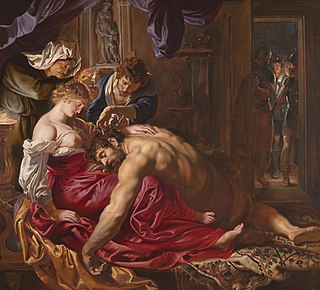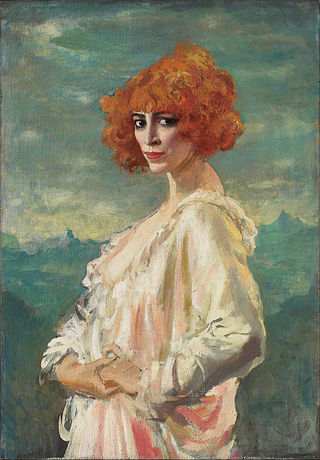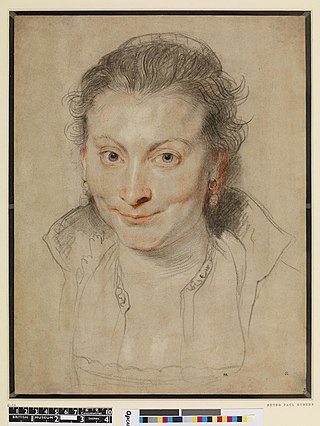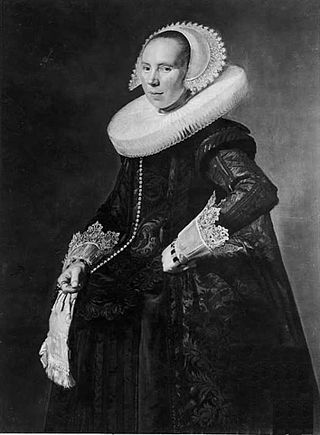
Events from the year 1654 in art.

Simon Vouet was a French painter who studied and rose to prominence in Italy before being summoned by Louis XIII to serve as Premier peintre du Roi in France. He and his studio of artists created religious and mythological paintings, portraits, frescoes, tapestries, and massive decorative schemes for the king and for wealthy patrons, including Richelieu. During this time, "Vouet was indisputably the leading artist in Paris," and was immensely influential in introducing the Italian Baroque style of painting to France. He was also according to Pierre Rosenberg, "without doubt one of the outstanding seventeenth-century draughtsmen, equal to Annibale Carracci and Lanfranco."

Bernardo Strozzi, named il Cappuccino and il Prete Genovese, was an Italian Baroque painter and engraver. A canvas and fresco artist, his wide subject range included history, allegorical, genre and portrait paintings as well as still lifes. Born and initially mainly active in Genoa, he worked in Venice in the latter part of his career. His work exercised considerable influence on artistic developments in both cities. He is considered a principal founder of the Venetian Baroque style. His powerful art stands out by its rich and glowing colour and broad, energetic brushstrokes.
Events from the year 1606 in art.

Samson and Delilah is a painting long attributed to the Flemish Baroque painter Peter Paul Rubens (1577–1640) and displayed in the National Gallery. It dates from about 1609 to 1610.

The Honeysuckle Bower is a self-portrait of the Flemish Baroque painter Peter Paul Rubens and his first wife Isabella Brant, executed c. 1609.The couple is seated in fine clothes within a garden composition and a vine of honeysuckle is placed overhead. The symbolism of the double-portrait alludes to meanings of love and marriage, such as the holding of right hands, and the concept of the garden of love. The pose of the two figures and their fine clothing signify self-fashioning by Rubens. They wed in 1609, the same year that work was created; it was ultimately given to Isabella’s father Jan Brant and would later end up in the collection of Johann Wilhem II of Düsseldorf. The couple would be married for seventeen years, and have three children before Isabella died in 1625. Her death would have a profound impact on Rubens and through his loss he created an posthumous portrait.
Events from the year 1605 in art.

The Marie de' Medici Cycle is a series of twenty-four paintings by Peter Paul Rubens commissioned by Marie de' Medici, widow of Henry IV of France, for the Luxembourg Palace in Paris. Rubens received the commission in the autumn of 1621. After negotiating the terms of the contract in early 1622, the project was to be completed within two years, coinciding with the marriage of Marie's daughter, Henrietta Maria. Twenty-one of the paintings depict Marie's own struggles and triumphs in life. The remaining three are portraits of herself and her parents. The paintings now hang in the Louvre in Paris.

Isabella Brant was the first wife of the Flemish painter Peter Paul Rubens, who painted several portraits of her.

The Marchesa Casati is a portrait of Luisa Casati by Augustus John, painted in oil on canvas in 1919. It is currently housed in the collection of the Art Gallery of Ontario (AGO) in Toronto. John made three paintings of the Marchesa, but the AGO one is the best known.

Sir Peter Paul Rubens was a Flemish artist and diplomat from the Duchy of Brabant in the Southern Netherlands. He is considered the most influential artist of the Flemish Baroque tradition. Rubens's highly charged compositions reference erudite aspects of classical and Christian history. His unique and immensely popular Baroque style emphasized movement, colour, and sensuality, which followed the immediate, dramatic artistic style promoted in the Counter-Reformation. Rubens was a painter producing altarpieces, portraits, landscapes, and history paintings of mythological and allegorical subjects. He was also a prolific designer of cartoons for the Flemish tapestry workshops and of frontispieces for the publishers in Antwerp.

Isabella Brant, a portrait drawing, was executed in Antwerp around 1621, by Flemish artist and diplomat, Peter Paul Rubens (1577–1640). Brant (1591–1626) was Rubens' first wife and modelled for some of his portraits until her untimely death in 1626. The portrait is drawn in black and red chalk with white heightening on brown wash paper.
Raikes Currie was Member of Parliament (MP) for Northampton from 1837 to 1857. He was a partner of the bank Curries & Co., which became part of Glyn, Mills & Co. in 1864, along with his father, Isaac Currie, in Cornhill, City of London, and had several interests in the newly developing colony of South Australia. He restored Minley Manor and made substantial improvements to the estate, work which was continued by his son and grandson.

Portrait of Cunera van Baersdorp is an oil-on-panel painting by the Dutch Golden Age painter Frans Hals, painted in 1625 and now in a private collection. It is considered a pendant portrait to the Portrait of a Man Standing, now identified as Cunera's husband Michiel de Wael.

The Palazzo Spinola di Pellicceria, also known as Palazzo Francesco Grimaldi, is a palace located in piazza di Pellicceria in the historical center of Genoa, Northwestern Italy. The palace was one of the 163 Palazzi dei Rolli of Genoa, the selected private residences where the notable guests of the Republic of Genoa were hosted during State visits. On 13 luglio del 2006 it was added to the list of 42 palaces which now form the UNESCO World Heritage Site Genoa: Le Strade Nuove and the system of the Palazzi dei Rolli. It is currently owned by the Ministry of Cultural Heritage and Activities and Tourism and houses the National Gallery of Art in Palazzo Spinola.

Giovanni Carlo Doria (1576–1625) was a Genoese art collector and mecenas. A son of Agostino Doria, doge of Genoa in 1601-1603, he was a prominent member of one of the richest and most influential families of the Republic of Genoa; his brother Giovanni Stefano Doria (1578-1641) became the 101st doge of Genoa (1633-1635) and was considered the richest man in Italy in his day. Giovanni Carlo was married to Veronica Spinola, daughter of Ambrogio Spinola. He was given the Order of Santiago by Philip III of Spain.

Portrait of a Lady Holding a Fan is a painting by the Italian artist Artemisia Gentileschi. Executed in the mid-1620s, it is part of the collection of The Sovereign Military Order of Malta. There is no firm idea who the sitter is, although some historians have wondered if the portrait is indeed a self-portrait. However, given the rich clothing and jewellery of the sitter, this is unlikely.
Galerie van Diemen was a commercial art gallery founded in 1918 in Berlin (Germany), and which had branches in The Hague, Amsterdam and New York. Under the Nazis, the German branch was Aryanized and its Jewish owners forced into exile and murdered.

Giovanni Vincenzo Imperiale was an Italian nobleman, art collector, and man of letters.

The Palazzo Vincenzo Imperiale is a building located in Campetto at number 8a, in the area of the Soziglia Market in the historical centre of Genoa. The building was included in the list of palaces included in the Rolli di Genova, UNESCO World Heritage List sites. Designed and decorated in the second half of the 16th century by Giovan Battista Castello, it constitutes one of the major Mannerist creations in Liguria.
















